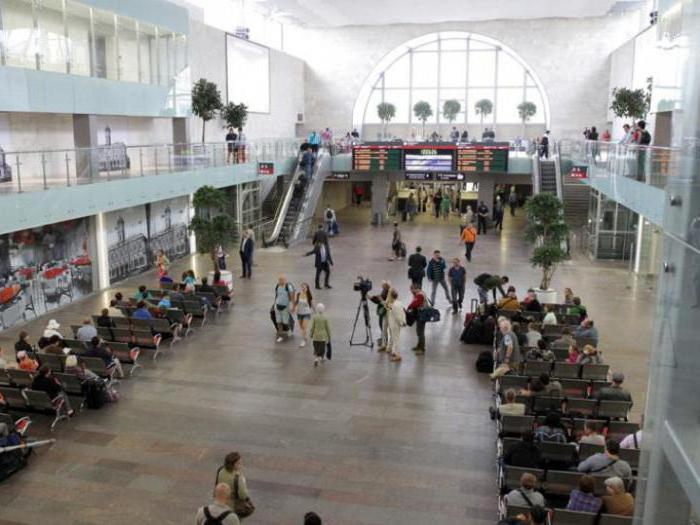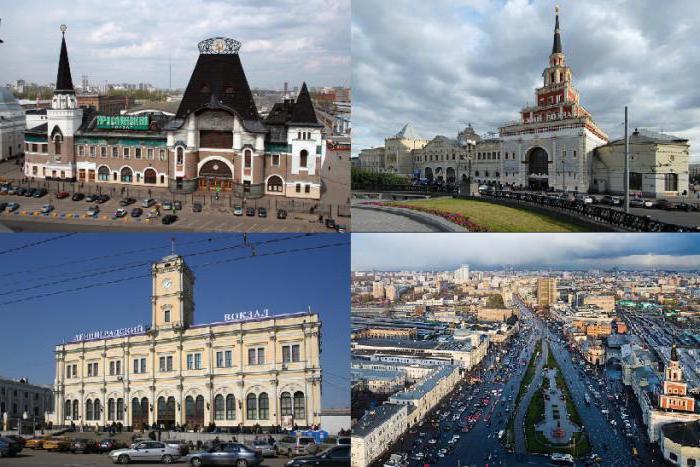Moscow is a megalopolis of federal significance, the capital of Russia. The number of citizens is more than 12 million people. Among Muscovites there are many nonresident people who regularly use the services of Russian railways. A city with so many visitors of one or two stations would not be enough.
A huge flow of people passes annually through Moscow railway stations - over 500 million passengers. It is several times higher than the passenger flow of airports.
How many railway stations are currently operating in Moscow
Many are interested in the history of the most important city of the Russian Federation. But not everyone knows how many railway stations in Moscow. They were built 10 during the existence of the metropolis. But in 1896, the government decided to close and liquidate the Nizhny Novgorod station. Since then, 9 station complexes have been involved in the capital.
We answer the question of how many railway stations are in Moscow, and call them:
- Belorussian.
- Kazan.
- Kievsky.
- Kursk.
- Leningradsky.
- Paveletsky.
- Riga.
- Savelovsky.
- Yaroslavsky.
From which railway terminals can I get to the airport?
How many railway stations in Moscow are connected with airports? The answer is simple: three. Aeroexpress trains depart from them:
- from Paveletsky to Domodedovo;
- from Belorussky to Sheremetyevo;
- from Kiev to Vnukovo.

An electric train coming from the Belarusian terminal makes a stop at the Kursk station and Kalanchevskaya station (Komsomolskaya square).
Victory Station
Victory Station is called Belorussky Station. During the Great Patriotic War, trains with soldiers, medicines, military equipment went to the front from its platforms. It was opened in the year 70 of the 19th century and was rebuilt more than once. Nevertheless, the original appearance of the building, which is an architectural monument, has been preserved to this day.
The complex was able to receive about 50 thousand people a day. It has modern technical equipment. Trains depart from here to the Western regions of the country, to Eastern and Central Europe.
It was here that the scenes of the films "Belorussky Station", "Cranes are Flying", "The Siberian Barber" were shot.
Paveletsky railway station
1900 brought the capital another station - Paveletsky. The exterior of the complex is impressive and simple. The deceptive impression of a one-story building is created outside. In fact, this is a four-story building that includes three tiers of passenger space and a technical floor.
Thanks to the reconstruction of the 80s of the XX century, the complex can receive approximately 10,000 passengers at once. Trains from the Volga region (Middle and Lower), the Caucasus, and the Central Black Earth region arrive at this terminal.
Memorial to the Patriotic War of 1812
Kievsky station began its work in 1899. In the years 1914-1920. a new station complex was erected, designed by Rerberg I.I., Oltarzhevsky V.K., Shukhov V.G. This was and is a real memorial building dedicated to the Patriotic War of the beginning of the XIX century.
Railway platforms adjacent to the complex reliably shelter a huge arched ceiling from the weather. Any traveler can admire this masterpiece of engineering.
Guests from Ukraine, Moldova, Italy, the Czech Republic, Serbia, Greece, Turkey come to this terminal.
How many railway stations in Moscow on Komsomolskaya Square
Komsomolskaya Square is called the “area of three stations”, since exactly three of them were erected on it: Kazan, Leningradsky and Yaroslavsky.

The very first in 1851 was opened Leningrad Station. Since 1862, Kazan and Yaroslavsky were commissioned. Initially, these were small buildings made of wood.
The Leningrad station complex is the only one in Moscow that is located in the department of St. Petersburg. In the Northern capital there is a station, like two drops of water similar to Leningradsky - Moscow. During the reconstruction, the complex was significantly expanded, but the main facades remained in the form that they were designed by the famous Russian architect Ton K. A. From here trains leave in the north-west direction.
Yaroslavsky station was built in the new Russian style by the outstanding master Shekhtel F. O. The structure is like the “tees” of the Russian North (buildings that include three buildings). This is the largest station of the capital in terms of passenger traffic, connecting it with the North, Siberia, the Urals, the Far East, China, Mongolia.
The building of the Kazan complex was designed by the academician of architecture A. Shchusev. The multi-tier tower and the zodiac clock make the building a unique decoration of the square. Trains leave this terminal to the south, east and southeast of the country.
Riga and Savyolovsky stations
Opened in 1901, the Riga train station complex was built in the old Russian style. This is a white and blue building, similar to a tower. The author of the project was S. Brzhozovsky, and the architect Dietrich Yu.F. embodied his plans. Today, the station serves trains leaving for the Baltic states.
The construction of the Savyolovsky terminal was initiated by S. Mamontov. In 1902, he began to work. This is a suburban station serving express trains and electric trains.
Savelovsky and Riga - the least busy railway stations in Moscow.
Kursky station
The Kursk complex began its history from the 60s of the XIX century. Then it was called "Nizhny Novgorod." Since 1896, the station building was moved and became known as Kursk-Nizhny Novgorod. In 72, the twentieth century, a modern building was erected with a 15-meter glass facade and an unusual corrugated roof.
This is the largest railway station in Russia (designed for comfortable accommodation of 11,000 passengers). From it you can leave for Nizhny Novgorod, Kursk, Ukraine, the Caucasus. Being a transit terminal allows you to get to many other cities (St. Petersburg, Anapa, Rostov-on-Don, etc.).
So we figured out what railway passenger complexes are in the capital and how many. There are nine railway stations in Moscow in total, and each is important for the successful operation of the largest Russian railway junction.
